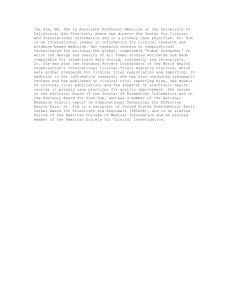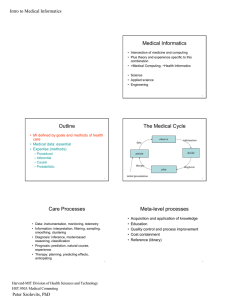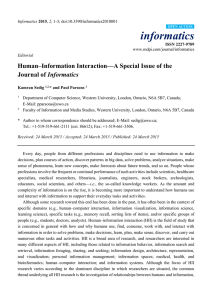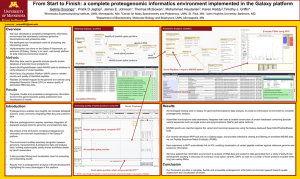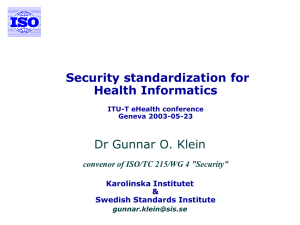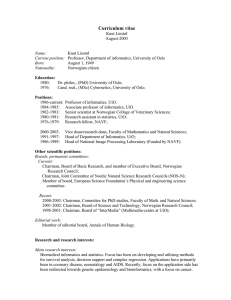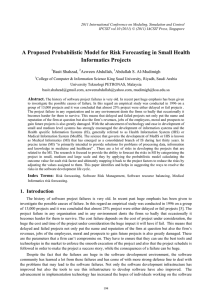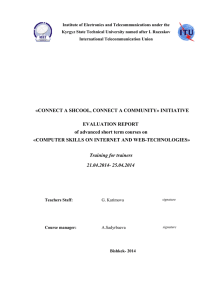Infoflllatics · 1
advertisement
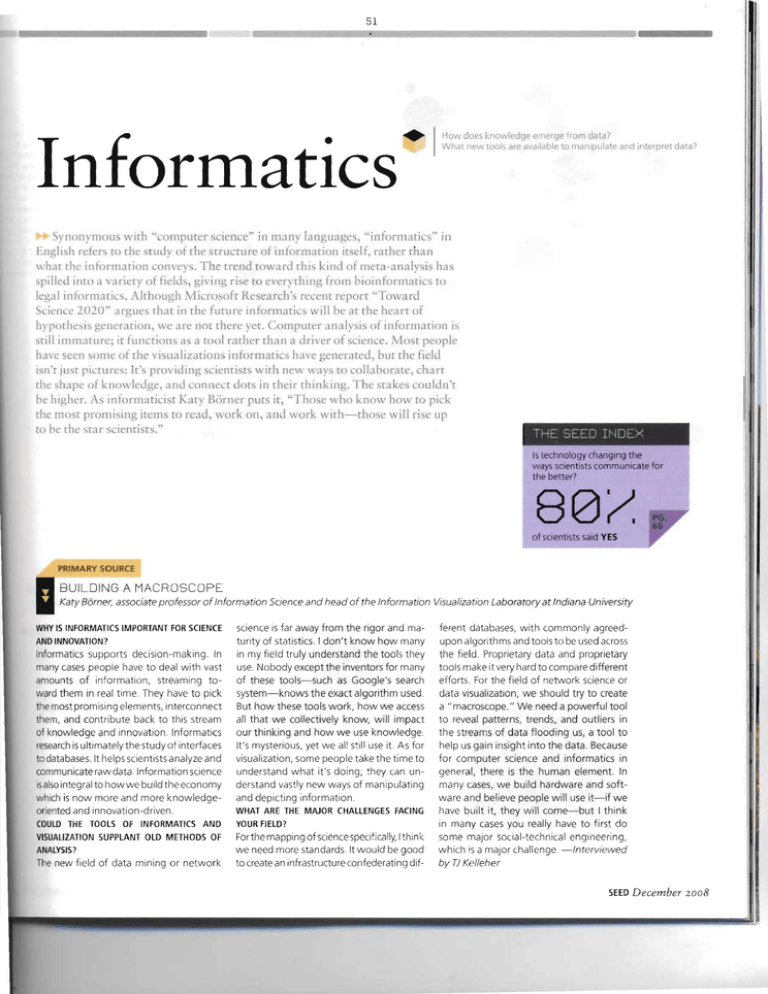
51 How does ~'1owlerlge emerge from ddt37 What new loob ar.., aVdllable to manipulate and interpret data 1 Infoflllatics · 1 Synonymous with "computer science" in mony languages, "informatic '" in English rder~ to the stud) ofrht:: trucrure of in formation Itself, rather than what the information conveys. The trend towarJ thi .. kind of mcra-analysi hil!> . pi lied into a variety of fields, giv ing ri e rever) thing. from hiomformatlcs to legal informat ics. Alrhough Microsoft Resear h':, recent report "Toward Science 2020" argues thar in the future mfonnatics \vtll be at the heart of hypothesis gl;'neration, we are nO[ there yet. ,ompurcr ,lnalysis of information IS still immature; It funct ions a\ a rool rather than <l driver uf sCience. Most people have seen some of the vi uali/:ltion, informatics have generated, but rhe field isn't lust pICtures: Ir\ proviJing., iemists with new way' to collaborate, chan the shnpe ni knowledge, and connect dots in their thinking. The stakes couldn't be higher. A~ informa l-jeist Katy Biirncr pllts it, "Tho e who know how to pick the most promi'llng item to read, \\ ork on. :md work with-tho<;\: will r ise lip to be the st~1r c;cicntisrs." Is technology changing the ways scientists communicate for the better? 801. of scientists said YES PRIMARY SOURCE a BUI L DING A MACROSCOPE Katy Borner, associate professor of Information Science and head of the Information Visualization Laboratory at Indiana University WHY IS INFORMATICS IMPORTANT FOR SCIENCE AND INNOVATION? Informatics supports deciSion-making. In many cases people have to deal with vast arnou nts of information, streaming to­ ward them in real time. They have to pick the most promising elem ents, interconnect them, and contribute back to this stream of knowledge and innovation . Informatics research is ultimately the study of interfaces to databases. It helps scientists analyze and communicate raw data . Information science is also integral to how we build the economy which is now more and more knowledge­ oriented and IIlnovation-driven . COULD THE TOOLS OF INFORMATICS AND VISUALIZATION SUPPLANT OLD METHODS OF ANALYSIS? The new field of data mining or network science is far away from the rigor and ma­ turity of statistics. I don't know how many in my field truly understand the tools they use. Nobody except the inventors for many of these tools- such as Google's search system-knows the exact algorithm used. But how these tools work, how we access all that we collectively know, will impact our thinking and how we use knowledge. It 's mysterious, yet we all still use it. As for visualization, some people take the time to understand what it's doing; t hey can un­ derstand vastly new ways of manipulating and depicting information. WHAT ARE THE MAJOR CHALLENGES FACING YOUR FiElD? For the mapping of science specifi ca lly, I think we need more standards. It would be good to create an IIlfrastructure confederating dif- ferent databases, with commonly agreed­ upon algorithms and tools to be used across the field. Proprietary data and proprietary tools make it very hard to compare different efforts. For the field of network science or data visualization, we should try to create a "macroscope." We need a powerful tool to reveal patterns, trends, and outliers in the streams of data flooding us, a tool to help us gain insight into the data. Because for computer science and informatics in general, there is the human element. In many cases, we build hardware and soft­ ware and believe people will use it- if we have built it, they will come-but I think in many cases you really have to first do some major social-technical engineering, which is a major challenge. -Interviewed by TJ Kelleher SEED December 2008


